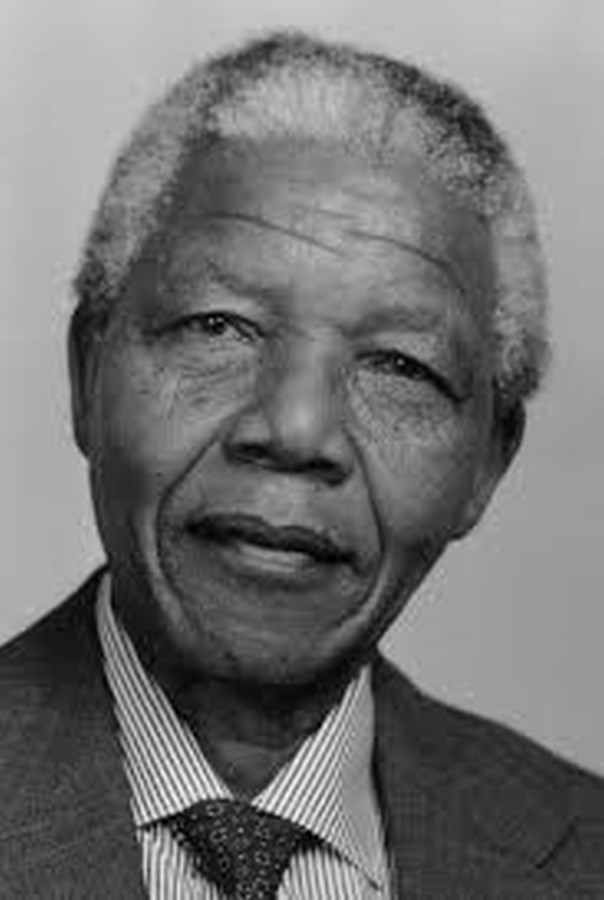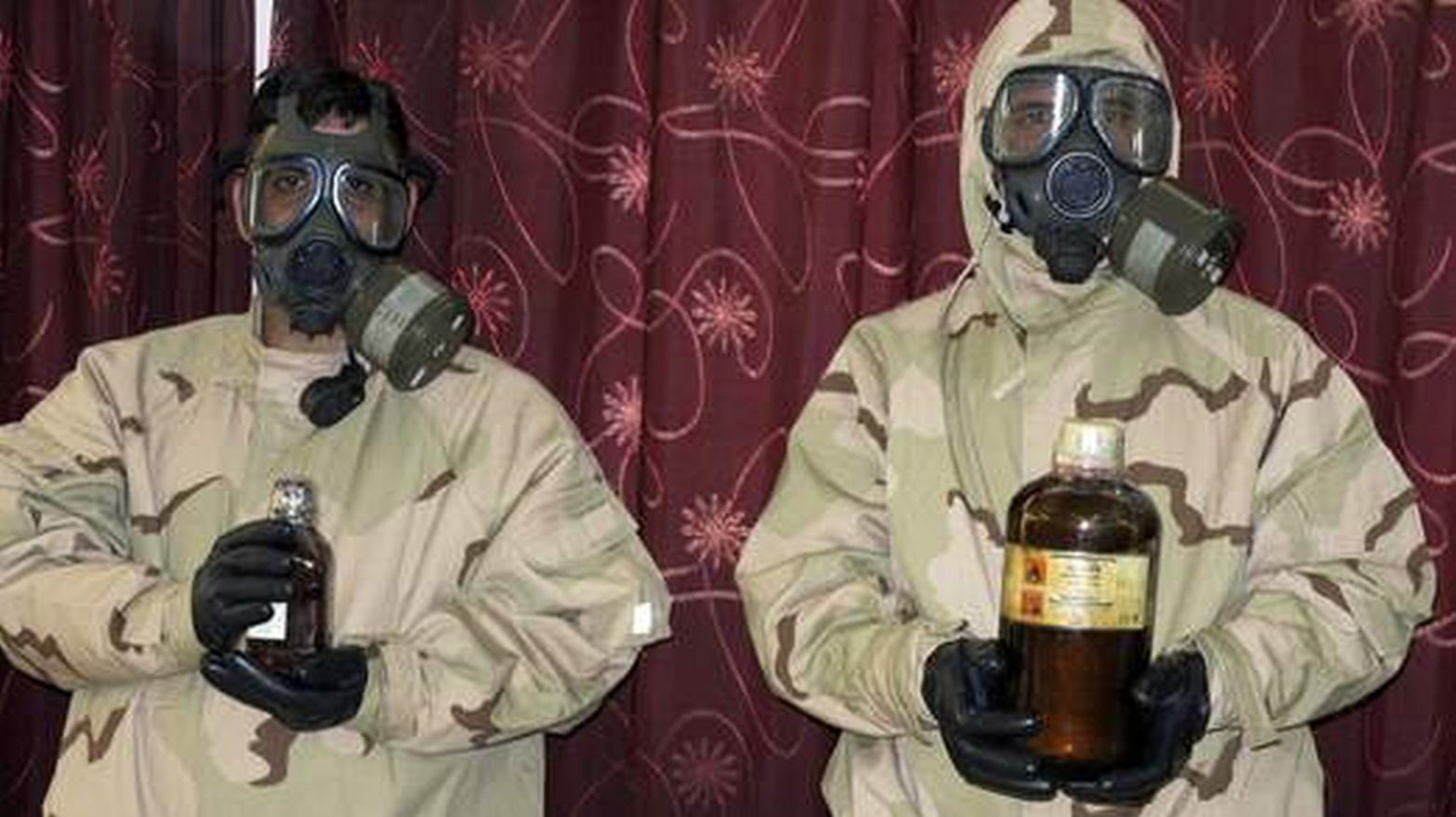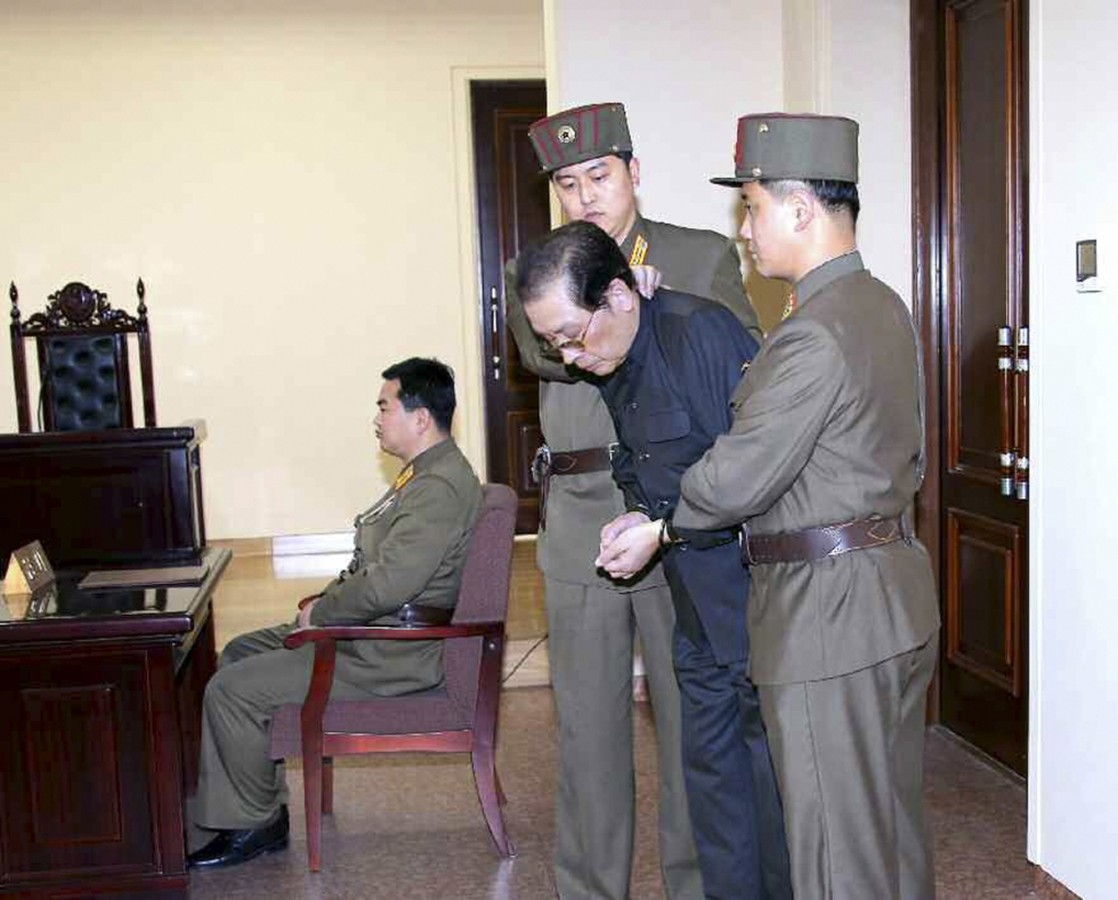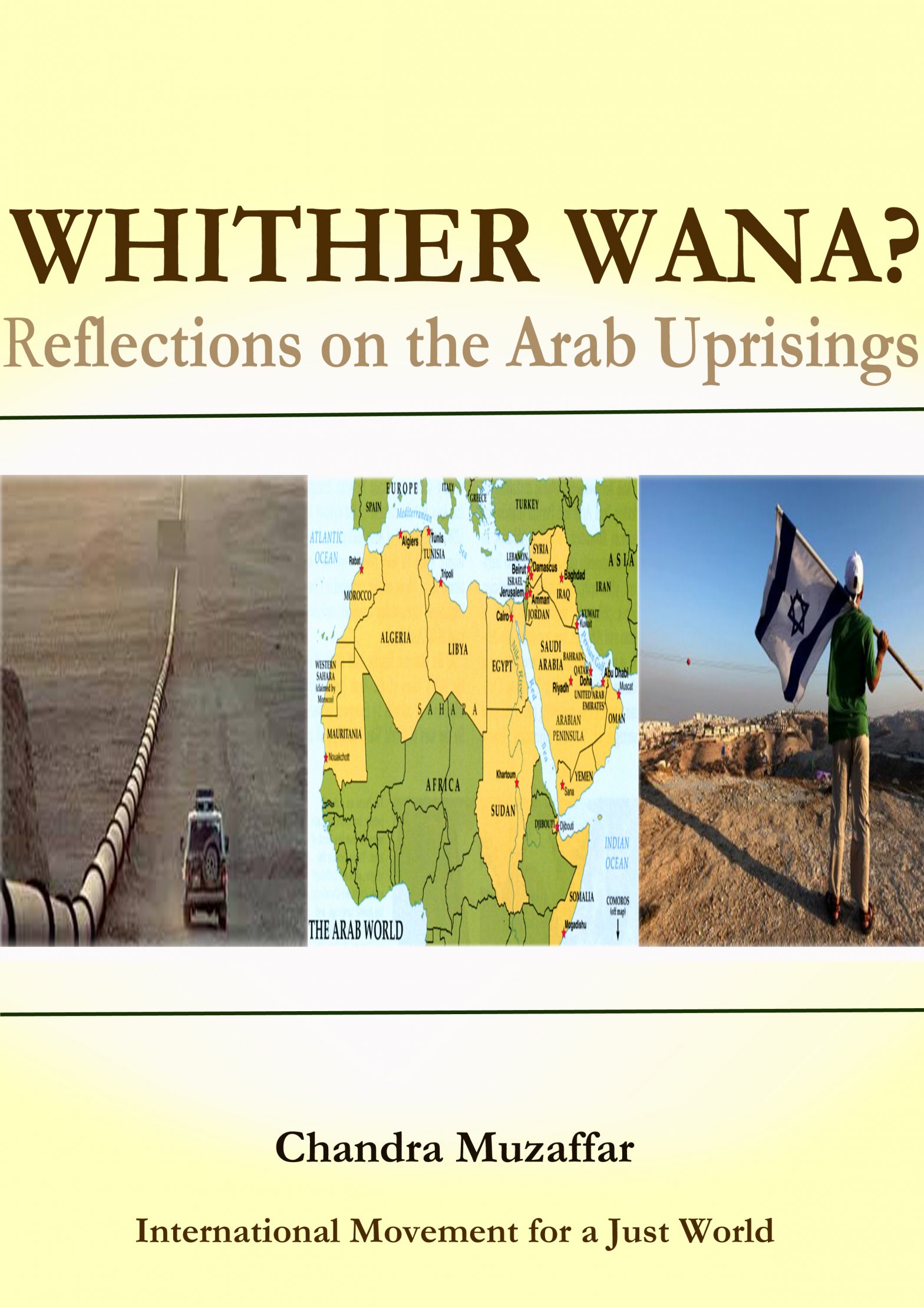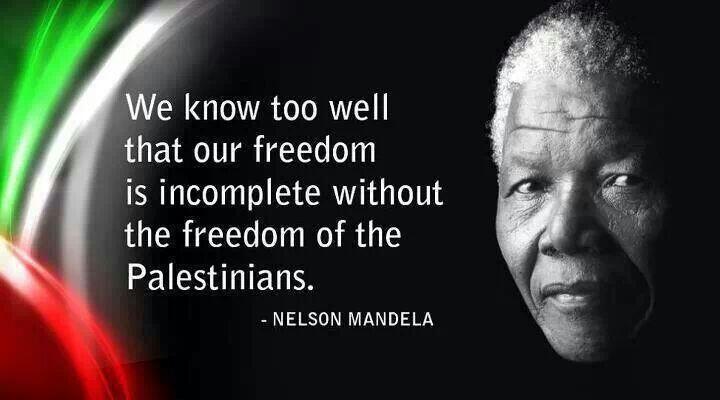Vandana Shiva & Jane Goodall Interviewed by Amy Goodman
05 December, 2013
@ Democracy Now!
At the recent International Women’s Earth and Climate Initiative Summit, Jane Goodall and Vandana Shiva discuss their decades of work devoted to protecting nature and saving future generations from the dangers of climate change. A renowned primatologist, Goodall is best known for her groundbreaking work with chimpanzees and baboons. An environmental leader, feminist and thinker, Shiva is the author of many books, including “Making Peace with the Earth: Beyond Resource, Land and Food Wars” and “Earth Democracy: Justice, Sustainability, and Peace.”
The video is a longer version which includes a Q&A which is not in the transcript below.
Transcript
This is a rush transcript. Copy may not be in its final form.
AMY GOODMAN: We’re going to put off a debate on nuclear power that we had planned today to turn to two remarkable women, Jane Goodall and Vandana Shiva. I had the opportunity to sit down with them recently. It was right before the U.N. climate summit that took place in Poland, but we were in Suffern, New York, at the International Women’s Earth and Climate Initiative Summit. Jane Goodall, renowned primatologist, best known for her groundbreaking work with chimpanzees and baboons; Vandana Shiva, an environmental leader, feminist and thinker from India, author of many books, including Earth Democracy: Justice, Sustainability, and Peace and Staying Alive: Women, Ecology and Development. I began by, well, going back to the beginning, with each of these remarkable women, and asking Vandana Shiva, who had just flown in from India, to talk about where she was born.
VANDANA SHIVA: I was born in a beautiful valley called Doon Valley in the Himalaya. And I took for granted that the forests and rivers I had grown with would be there forever, because they were. And then, in the early ’70s, the streams started to disappear, the forests started to disappear. That’s around the time peasant women of our area just rose and started the movement, Chipko, which means to embrace, to hug. And the movement basically was women saying we’ll put our bodies before the trees so you can’t cut them, because these trees are our mothers, they give us food, fuel, water, but more importantly, they give us soil, water and pure air. I decided—at that time I was doing my Ph.D. in the foundations of quantum theory, hidden variables and nonlocality. And I was doing it in Canada. But I made a commitment that every vacation I would come and volunteer for Chipko. And I always say I did a Ph.D. in the University of Western Ontario in quantum theory, but all my learning of ecology really came from the women of the Himalaya.
And then the problems continued, didn’t go away. And even though we managed to stop the logging in the hills because of Chipko, you know, then came globalization, and then came everything else and the GMOs and the Monsantos. So, four decades, I’ve been serving the Earth and serving people and started the Research Foundation really to—I call it the “Institute for Counter-Expertise,” because so much of what is called expertise is there to destroy the Earth, to exploit, and to reward the exploiters. And I thought knowledge is about something else.
AMY GOODMAN: And Dr. Jane Goodall?
JANE GOODALL: Well, I suppose I began loving nature when I was, I don’t know, one and a half. Apparently, I was always crawling about looking at insects and plants and things like that.
AMY GOODMAN: Where were you born?
JANE GOODALL: In England, born in London, moved out to Bournemouth on the coast because of World War II. And when I was 10 years old, we had very little money. When I was 10 years old, I loved—I loved books, and I used to haunt the secondhand bookshop. And I found a little book I could just afford, and I bought it, and I took it home. And I climbed up my favorite tree, and I read that book from cover to cover. And that was Tarzan of the Apes. I immediately fell in love with Tarzan. And goodness, I mean, he married the wrong Jane, didn’t he?
At any rate, I was 10 years old, and I decided I would grow up, go to Africa, live with animals and write books about them. Everybody laughed at me. How would I do that? Not only no money, Africa, the “Dark Continent,” but, you know, I was a girl. Girls didn’t do that sort of thing. I think I was amazingly blessed because of the mother I had. But for her, I doubt I would be sitting here now. So, where everybody else said to me, “Jane, dream about something you can afford; forget this nonsense about Africa,” she said, “If you really want something and you work hard and you take advantage of opportunity and you never give up, you will find a way.”
So, anyway, it’s not important. I saved up. I got to Africa. I got the opportunity to go and learn, not about any animal, but chimpanzees. I was living in my dream world, the forest in Gombe National Park in Tanzania. It was Tanganyika when I began. A beautiful—it’s beautiful, amazing rivers and waterfalls. And I was learning about these extraordinary beings so like us, helping us in a way to understand who we are.
And then I discovered at a big conference in 1986 that right across Africa chimpanzees were going. Their forest world was going. And so I began traveling around in Africa talking to whoever I could find about chimpanzee conservation and forest conservation. And then I found how the African people were suffering, about the poverty, about the disease, about the ethnic violence. And then I began to realize how so many of Africa’s problems, which were leading to the destruction of the forest, were caused by outside influences and that the evil of the old colonial era was carrying on and that some of the big multinationals were doing the same thing, were moving into Africa and other developing countries and taking the natural resources and leaving people poorer than ever. And so I began traveling around also in North America, in Europe and increasingly in Asia, and learning more and more about the harm that we have inflicted on the environment. And that’s what’s brought me into spending my life helping to protect the forest as much as we can and learning how the destruction of the forest not only is destroying the chimpanzees and other animals, but increasing climate change.
AMY GOODMAN: You know, the motto of Democracy Now! is “the exception to the rulers,” because that’s what we have to be, holding those in power accountable. And I think, across your disciplines, that is what you do. And I was wondering how you do it, if you could give us examples of how you challenge power that you feel is damaging the Earth, and what you are doing now to change that. Vandana?
VANDANA SHIVA: You know, a lot of the power of the rulers comes from what Bacon said, the marriage of knowledge with power, a particular kind of knowledge, a very mechanistic knowledge that defined nature as dead—and, on the other side, women as passive. So, the exception to the rulers, in this case, is about resurrecting the knowledges that are about the living Earth and our tradition—and I am so touched that this evening began with the beautiful prayer and legacy of the First Nations with Janice and in the beautiful music from Melanie. To me, this is the United States of America, traditions that are totally submerged. So my commitment has been, first and foremost, to really, you know, do a resurrection of hidden knowledges and world views, which is what women bring to this discussion.
And every time I’ve done a study, even when government and United Nations will commission it, the first thing I do is go talk to the women in the villages. So, for example, I was asked to look at the impact of mining in Doon Valley. That’s when I gave up my job and work in Bangalore and returned to Dehradun to start the foundation. And the government was writing this TOR on the ugly look of the mountains, because Indira Gandhi had commented. So I went to the women. I said, “What’s the issue with this mining?” And they said, “Water.” They said, “That limestone holds the water.” None of the scientists said it. So I rewrote the terms of reference and did the participatory analysis.
But the second thing we always do is—because it’s participatory, people know. People have knowledge. It might not be recognized by the dominant system, which I call “corporate patriarchy” now. It was “capitalist patriarchy” when Chipko happened, because the corporations weren’t such big players in our lives. They were contained by all the rules of democracy. And they’ve knocked those rules off bit by bit. The other thing I always do is build the movement simultaneously, because I don’t think you can fight these battles top to top. You just can’t. So, for every study we’ve done and every piece of research we’ve done, one, we’ve counted a paradigm. I mean, all my work on the green revolution—it was assumed the green revolution produces more—found out, no, it doesn’t. Produces more commodities, but commodities are not food. And then we build the movement. When I came to know about how intellectual property rights were being put into the World Trade Organization, I traveled the length and breadth of the country sitting and holding workshops with farmers, who then rose, and 500,000 came to the street. We’re talking about ’92, before Seattle. And we were together in Seattle, Amy. So it’s a combination of major grassroots mobilization as well as dealing with the paradigm wars.
And I think the challenge of this summit is to put forth another paradigm about how to live on the Earth—what the Earth is first, she’s not a—you know, she’s not there to be engineered, she’s not bits of dead rock; she is the living Earth that we were reminded about—and also, through that, bring forth another leadership for another world, because we don’t want leadership in that rotten world of destruction. It’s not worth it anyway. It’s not going to last too long. We want the seventh generation, cultivation of leadership for the future. And it’s interesting, the seventh generation logic that Janice talked about, that every action we take should bring to our minds the seventh generation, in India we have the same, seventh generation. That was what civilizations took care of. Uncivilized people rape the Earth for today.
AMY GOODMAN: Vandana Shiva at the International Women’s Earth and Climate Summit. Vandana is an environmental leader, feminist thinker from India, author of many books, including Earth Democracy: Justice, Sustainability, and Peace and Staying Alive: Women, Ecology and Development. Jane Goodall, renowned primatologist, best known for her groundbreaking work with chimpanzees and baboons. When we come back, more of our discussion. Stay with us.
[break]
AMY GOODMAN: This is Democracy Now!, democracynow.org, The War and Peace Report, as we continue my conversation with two remarkable women, Jane Goodall and Vandana Shiva. I interviewed them at the International Women’s Earth and Climate Summit. Jane Goodall, renowned primatologist, best known for her groundbreaking work with chimpanzees and baboons; Vandana Shiva, environmental leader, author of many books, including Earth Democracy as well as Staying Alive. I asked Jane Goodall to talk about the role of women in her years of struggle to save the environment.
JANE GOODALL: Well, I think, you know, I come from this—from studying chimpanzees, right? And when you study chimpanzees, there’s a male role and female role, and they’re very different. The male is responsible for protecting the territory and the resources in the territory for his females and his young, and enlarging it if he can. It sounds familiar. It sounds human. The female is responsible for raising her young, for finding enough food to raise her young, in which she is helped by the male. And I think, I can’t help saying, as we start off this conference with the role of women, which is so very important, of a saying—and I first heard this when I was in Mexico, but I think the saying was from Ecuador. I’m not sure. But one of the indigenous people said, “In our tribe, we have a saying, that a tribe flies like the condor, and the tribal only fly true when the wings of the condor are in balance, and one wing is male and one wing is female. The tribe will fly true when the wings are in balance.”
So, as we move into this—and I wish I was here for the whole few days—but as we move into this, we have to remember we’re in a world where men are in it as well as women. And men have traditionally been put in the same role as the male chimpanzees. They’re there. They’ve been protecting the territory. You know, in the old days, they were responsible totally for the—for looking after the family, for getting the money. They were the breadwinners. They were all these things. And today, women are moving into those traditionally male roles. And I think I was say—I wasn’t saying it to you, Amy, earlier, but I’ve been fascinated by watching this change, particularly coming at it from the point of view of, you know, learning about the male and the female chimpanzee and thinking, as Louis Leakey thought, that seven million years ago there was a common ancestor, a human-like, chimpanzee-like creature, which over seven million years we developed into people, and they developed into chimpanzees, but there was this common ancestor. And so, watching as our women have moved into leadership roles, I noticed that, initially, to get into those positions, the women were trying to be more men—more male than the men. And there was a stridency and an anger in some of those early women leaders, which is understandable. But I think and I feel that that’s changed, that women are moving into leadership positions, and they are confident in their femininity.
And women traditionally are nurturing. Women traditionally nurture their young. The seven generations are important to women. And this is what I see. And I think, what’s gone wrong? What’s gone wrong with us? We’ve lost that wisdom. That is the wisdom of making a decision today based on how will it affect our people seven generations ahead. And we’ve lost that wisdom, and now we make decisions based on how will it help me now, how will it help the next shareholders’ meeting. So there’s a disconnect between the head and heart. And I am hoping and praying that women can come together and heal that disconnect, because if we don’t operate with our amazing head—the brain is what makes us more different from the other animals than anything else—with the human heart, love and compassion, we’ll never get there. And we do somehow need to create a world where we have two equal wings and find the roles for our boys as well as our girls. I just feel it’s terribly important.
AMY GOODMAN: Vandana, how do you nurture climate action?
VANDANA SHIVA: The first thing is to bring it down from the stratosphere. I think one reason the climate movement on the grassroots has taken longer to grow than movements around biodiversity conservation or water, etc., is because everyone got so overwhelmed with the parts per million, and everyone was looking at the graphs and how they climb and the hockey stick. And looking at the hockey stick is something that is out of control. There’s nothing you can do. But every emission begins on the ground. And every mitigation and adaptation action is on the ground. That’s why I wrote my book, Soil Not Oil. I was starting to feel worried that not only were we only dealing with the IPCC reports, that had kind of become the only place you could act, and go to the climate summits, but we were missing the biggest piece of where do greenhouse gas emissions come from.
You might remember the Kyoto Protocol was supposed to reduce emissions by 5 percent, and by the time we went to Copenhagen, emissions had increased 16 percent, because the solution in Kyoto was allow the polluters to trade in emissions and buy credits from those who don’t pollute. Not only did this make big money for the polluters, I know Arcelor—the Mittal family, which bought up all the steel plants, including the ones in Eastern Europe and France, he made a billion a year just through these emissions trading. But worse, because it all became such a racket, all kinds of really devastating activities started to be treated as Clean Development Mechanisms. One example is the fact that this year, 15th, 16th, 17th of June, we had the most intensive rains, and a glacial lake burst, and flooding like I’ve never seen in my life took place. Twenty thousand people have died in my region, the region where the Chipko movement started. The damage was accelerated by hydro projects, which were all getting Clean Development Mechanism money, in addition to all the benefits government gives.
Agriculture, industrial globalized agriculture is 40 percent of the greenhouse gases. We can do something about it today. If you notice, the official agenda is biochar. Biochar is burning biomass without oxygen, basically how charcoal is made. That’s not what the soil lives on. The soil lives on humus. But biochar is another place to make huge profit, whereas humus is just giving back to the Earth what we’ve received from her. And I think the word “humus” has such power, because I think humanity comes from it, humility comes from it, humidity comes from it—everything that gives life and creates our humanity comes from it. So, even though it might look a bit strange, but I think creating organic farms and organic gardens is the single biggest climate solution, but it’s also the single biggest food security solution. And given the economic crisis, both in this country—you watch southern Europe, you see the riots in Greece and Italy and Spain, and I work with youth, unemployed youth, in all of these places, one of the things I’m telling them all is go back to the land. You know, the banks messed up your lives. The governments have given up on you with their austerity programs. But the Earth will never abandon you. She is inviting you to be co-creators and co-producers so that we can solve all these multiple problems, which are interconnected.
And I think if there’s one thing women can bring to this discussion, in addition to those beautiful words that Jane used of love and compassion, the capacity to have compassion is the capacity to see connections. That’s the disease that the deeply patriarchal mindset has not been able to overcome, that they can’t transcend fragmentation and separation and thinking in silos, and, worse, thinking as if we are separate from the Earth, and therefore, as masters and conquerors, there’s just another experiment of control that you need the freedom to have. And I think we need to give a message saying, no, the Earth was not made by you, therefore you can’t fool around further. You’ve already messed up enough. Stop these geo-engineering experiments. We had a discussion on Democracy Now!, I remember, once about this. We need to tell them this world is about life, not just about your profits and your bottom line, so don’t reduce everything to a commodity, and don’t financialize every function of the Earth and all her gifts. So I think this is really the moment for another discussion, another thinking. And in all of this, the beautiful thing is, the concrete solutions are the most radical ones. The abstract has had its day.
AMY GOODMAN: Vandana Shiva and Jane Goodall at the International Women’s Earth and Climate Summit. Vandana Shiva is an environmental leader, feminist, thinker from India. She’s the author of many books, including Making Peace with the Earth, Earth Democracy: Justice, Sustainability, and Peace and Staying Alive: Women, Ecology and Development. Jane Goodall is the renowned primatologist, best known for her groundbreaking work with chimpanzees. She has written many books; among them, Harvest for Hope: A Guide to Mindful Eating. To see the extended hour of that discussion with Jane Goodall and Vandana Shiva, you can go to our website at democracynow.org. It took place in Suffern, New York.

